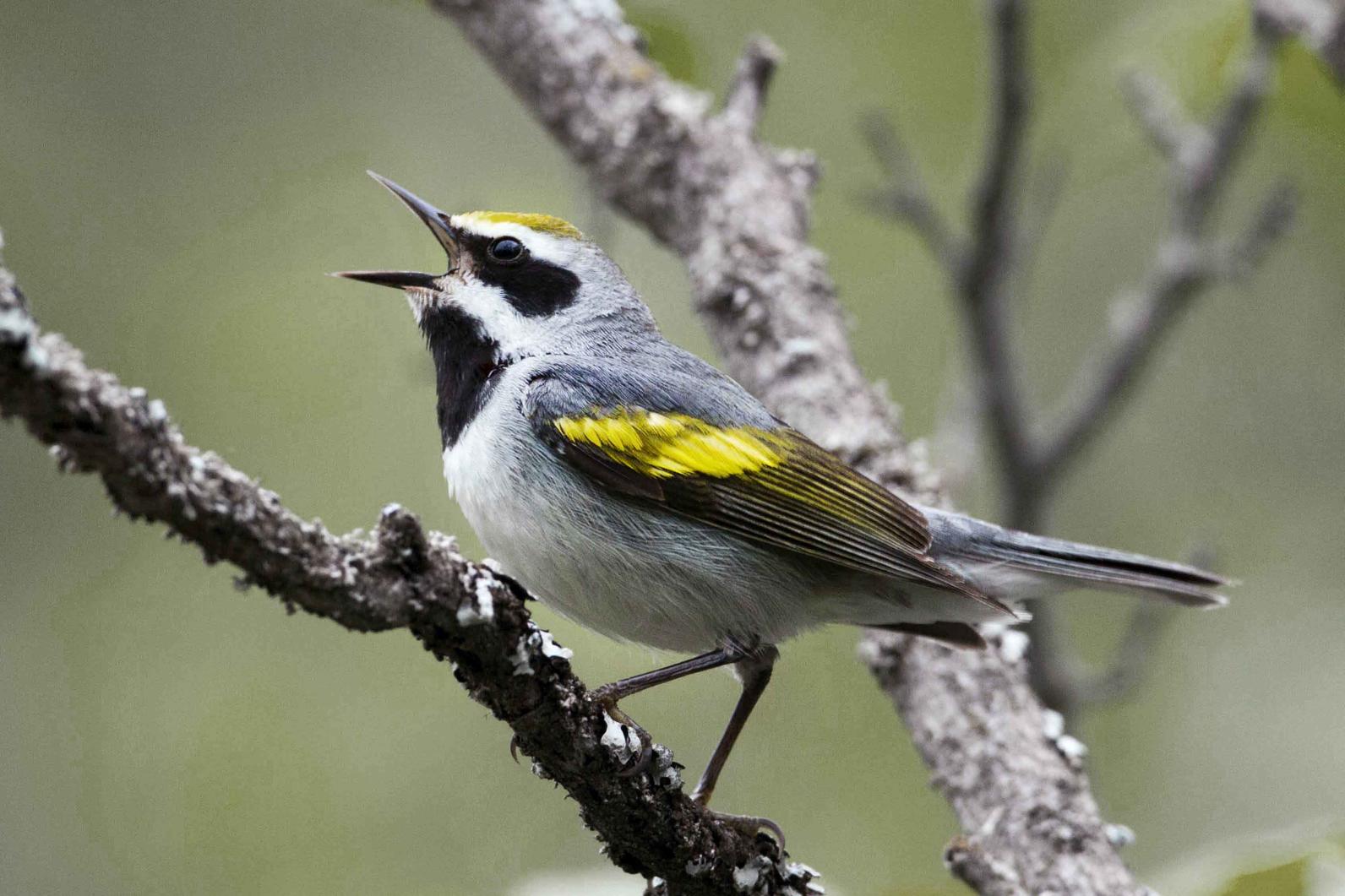As part of the Putting Working Lands to Work for Birds and People initiative, Curtis and his team are working to develop and restore habitat for the Golden-winged Warbler, a species being considered for protection under the Endangered Species Act.
North Carolina is home to an estimated 463 different bird species at some point during their annual life cycle. Some birds spend the winter here; some birds arrive in the spring to breed; some birds stay all year-round. Birds depend on finding the habitat they need when they arrive in North Carolina to sustain them.
The higher the numbers of a particular bird, the more likely the species is to thrive. Audubon North Carolina focuses its work to help birds, whose populations are most threatened.
Working to Protect the Golden-winged Warbler
The Golden-winged Warbler is one such bird species in decline and the focus of Audubon North Carolina conservation programs.
The Golden-winged Warbler arrives in the North Carolina mountain region to breed each spring. The more babies that make it out of the nest, the more birds there are to breed the following year. Protecting and enhancing breeding territory is very important to the survival of this species. Unfortunately, the numbers of Golden-winged Warblers has declined to the point at which the U.S. Fish and Wildlife Service considered listing the warbler as an Endangered Species.
Audubon North Carolina’s Director of Land Bird Conservation, Curtis Smalling, has spent a great deal of time researching this species and is considered one of the nation’s experts on the Golden-winged Warbler. Curtis’ and more conservation experts’ research is being taken into consideration as the group determines whether the Golden-winged Warbler needs such protection.
Here, Curtis helps us understand what it takes for a species to be considered an Endangered Species and what happens when a species is listed?

Criteria for Listing
This can seem like a mystery since it’s not a widely publicized process. But every species, whether potentially threatened or endangered, is evaluated on the following criteria:
- Is the species’ habitat or range facing destruction, modification or curtailment? It is important to know a species’ range, so the proper amount of space is managed to benefit the animal, as well as its ability to sustain and expand a healthy population. If a species is forced out of its range by a change in climate, lack of resources, diminished habitat, or human disturbance it will decline in numbers leading to possible extinction.
- Is the species being over-utilized for commercial, recreational, scientific or educational purposes? Overutilization of a species uses animals to the point that a population isn’t able to sustain itself or recover. Uncontrolled hunting of the Passenger Pigeon led to its extinction in the early 1900s.
- Is there a threat of disease or predation of the species? Disease can rapidly change the normal balance of a population particularly if it already suffers from existing challenges such as habitat loss or an increase in predators like raccoons or foxes.
- Are there other natural or manmade factors affecting the species’ survival? Due to human disturbance or development ecosystems can be altered to the point that they no longer sustain a species historically found in that ecosystem. Disappearing ecosystems can impact species survival.
How Does A Species Get On the List?
Meeting the criteria is just the first step. For a species to be added to the Endangered Species list, there is a strict legal process known as a rulemaking (or regulatory) procedure.
In the first step in assessing the status of a species, the Federal government publishes notices that state a species is under review and that the science community believes it meets the definition of threatened or endangered. The science community refers to these species as “candidates” for listing.
Through notices of review, scientists seek additional biological data that will help conservation biologists complete the status reviews for these candidate species. The full list of candidate species is available here.
Because of the number of candidates and the time required to list a species, there is a priority system designed to direct conservation efforts toward the plants and animals in the greatest need. The priority system is selected as follows:
- Highest Priority: The degree or magnitude of threat.
- Medium Priority: The immediacy of the threat.
- Lowest Priority: How distinctive the species is.
What protections are given to an endangered status bird?
Once listed as endangered, species receive several protections including:
- Protection from adverse effects of Federal activities such as thinning vegetation to prevent wildfires or dredging waterways;
- Restrictions on taking, transporting or selling a species;
- Authority for conservation groups to develop and carry out recovery plans;
- Authority for Federal government to purchase important habitat;
- Federal aid is designated to State and Commonwealth wildlife agencies with cooperative agreements.
These efforts contribute to species’ survival and assist in achieving the ultimate goals — conserving plants and animals, and maintaining their natural diversity and the ecosystems upon which they depend.
To learn more about how the Golden-winged Warbler would benefit from getting listed as an endangered species, and to see what we’re doing to conserve its habitats in N.C., click over to Part Two!




